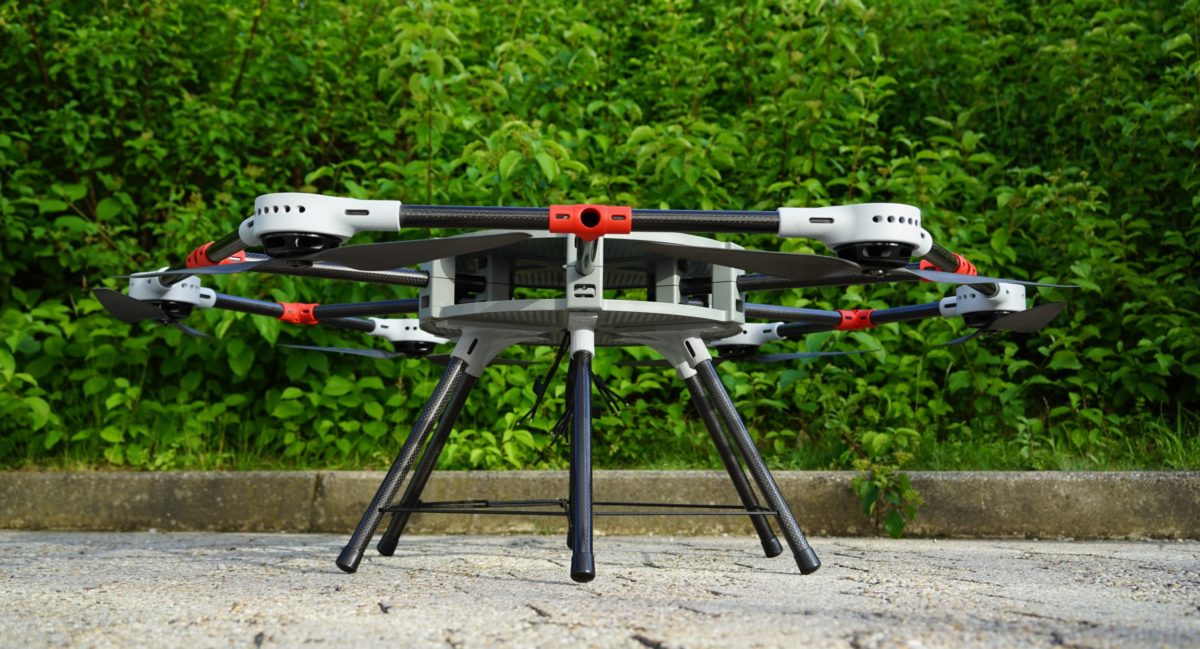
Flying robot on a mission
A flying robot was in the focus of attention during the first review in July. Developed by German Productive4.0 partners IEMTEC, Kinexon and University of Erlangen-Nuremberg FAPS, it is subject of a use case together with the car manufacturer BMW Group in work package 8. It is meant to make parts of the production safer and more cost effective.
“In the future, flying objects will be a perfect supplement to working devices,” Stefan Fink from IEMTEC says. “First of all, they save infrastructure on the ground like tunnels or bridges, and thanks to the continuing progress in battery technology the engines are able to let them fly more efficiently. On top, the latest technology from Kinexon allows indoor and outdoor navigation with an unseen precision.”
First flights have already been successfully performed at the University of Erlangen-Nuremberg premises. The next step will be to let it fly in a testing area in one of BMW’s working halls where workers are busy preparing carbon based car parts with an agent that prevents excessive adhesives from hardening which would deform the parts and make them less stabile. “The workers have to make sure not to inhale particulates of the substance they are spraying on and the fresh parts can be very hot,” Johannes Grasmeier from the BMW Group explains.
Total flight stability
But risk prevention measures will no longer be an issue with the flying robot taking over in the future. Hovering above the car parts it is doing the spray job even more precisely which saves material costs on top. Specific additives make the result visible under UV light and show whether the agent is evenly applied.
The robot with a diameter of one meter and with its six engines can carry a payload of up to 13 kg. To be on the safe side, it is only loaded with half of the weight. Thus it will still operate completely stable even if an engine happens to fail. Programmed accordingly and equipped with sensors, the flying robot needs no remote control by hand to go from one place to the next.
Unique multicopter
“Be it indoor or outdoor, we can always locate and navigate the device and let if fly according to the PPS (production plan software); this is something completely new,” Stefan Fink says and proudly points out the innovative way the flying robot is constructed: “A number of parts and pieces are being produced by a 3D printer. The method we use allows us to generate all kinds of forms exactly meeting the needs of a proposed deployment. Made of carbon fibre or fibreglass the parts are extremely light. And we rely on adhesive technology instead screws and nuts or rivets because adhesives don’t expand with increasing temperature.”
In this way, IEMTEC achieves a flight stability which is almost second to none. The spraying job is only the beginning for the unique flying robot. The next mission will be scanning parts, boxes and containers. All in all, it can be used for multiple purposes. That’s why it can also be called multicopter.


